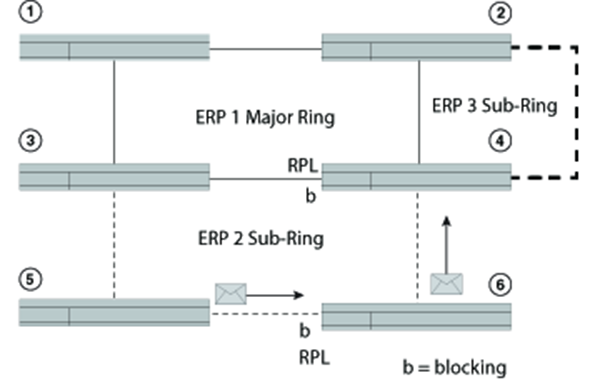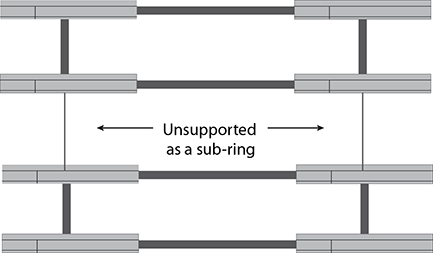Interconnected rings
Interconnected rings consist of one major ring and one or more sub-rings with shared physical links. The ring links between the interconnection nodes are controlled and protected by the ERP ring to which they belong. A sub-ring is similar to the major ring in that each sub-ring has an RPL and an RPL owner. The RPL owner can be configured in any node belonging to the ring.
Refer to the following figure. The dotted lines show two of the many potential sub-rings that you can configure.


Note
ERP Virtual channel support is no longer supported.A sub-ring in segments interconnecting major rings is not supported. Refer to the following figure, which shows a major ring and two segments not supported as a sub-ring.

Blocking prevents R-APS messages received at one ring port from being forwarded to the other ring port; it does not prevent the R-APS messages locally generated at the ERP control process from being transmitted over both ring ports, and it also allows R-APS messages received at each port to be delivered to the ERP control process.
Each ERN in a major ring terminates R-APS messages received on a blocking port and does not forward the message if the port is in a blocking state. Each ERN in a sub-ring, however, still forwards the R-APS messages received on a blocking port.

